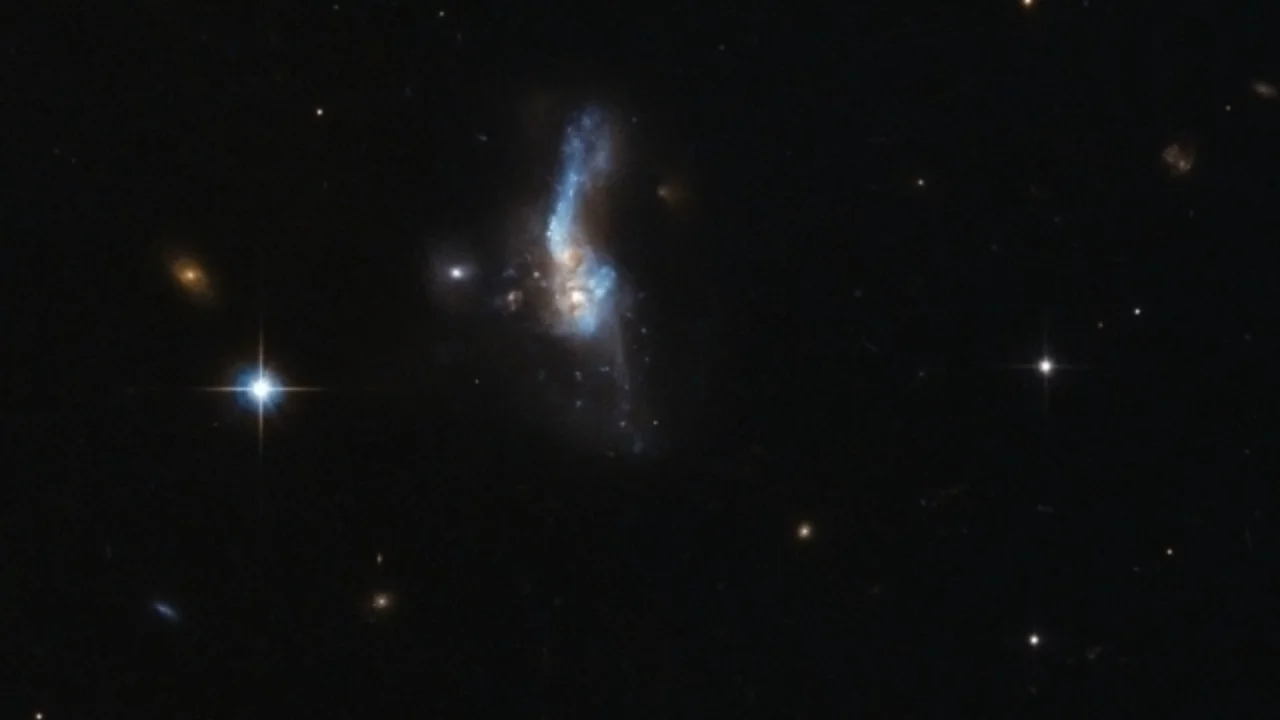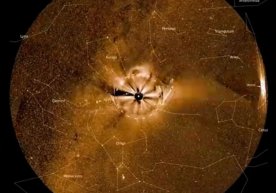
Another important discovery for the space scientific team has occurred - during observations of the Atacama Large Millimeter/Submillimeter Massif (ALMA), an international group of astronomers discovered a new, giant infrared galaxy with a light source near the famous quasar known as "Cloverleaf." This was reported by the journal "Monthly Notices of the Royal Astronomical Society."
It is reported that the discovered infrared galaxy emits one trillion times more light than the Sun's brightness. Such galaxies are known among astronomers as ULIRG (ultra-bright infrared galaxies), where star formation occurs at a mass of 100 to 1000 solar masses per year. According to scientists, galaxies of this type are of great importance for a deep understanding of the process of formation and development of stars in the Universe.
The "Cloverleaf" quasar, named H1413+117, is a massive energy source that appears quadrupled due to gravitational lensing. A team led by Japanese researcher Natsuki Hayatsu, while studying it through ALMA, unexpectedly discovered a new galaxy hidden behind this quasar.
Scientists note that this galaxy is invisible in optical light - it is completely covered with a layer of dust, but is very clearly observed in submillimeter waves. Such hidden objects are often difficult to detect using ground telescopes, as their light is absorbed by dust.
The newly discovered galaxy is approximately 6 arcseconds away from "Cloverleaf," with a red shift of 3.39 degrees. Researchers estimate its molecular mass to be around 40-230 billion solar masses, while the black hole's mass is around 0.1 billion solar masses.
Moreover, the galaxy's infrared brightness has reached the level of 2.8 trillion solar brightness. Its energy activity is so high that astronomers describe it as a "star explosion stage."
According to researchers, this ULIRG is not yet dynamically stable - perhaps it is formed as a result of the collision of two large galaxies rich in molecular gas. This increases the likelihood that in the future it will turn into an active nuclear galaxy (AGN), and then into an elliptical structure.
Astronomers are also planning new observations to study the molecular composition of the galaxy and its internal dynamics more deeply.
As a reminder, scientists at the University of Amsterdam recently announced the discovery of a new planet called TOI-2431b using NASA's TESS telescope. These discoveries once again confirm how many undiscovered secrets there are in the universe.
Read “Zamin” on Telegram!Users of Меҳмон are not allowed to comment this publication.













